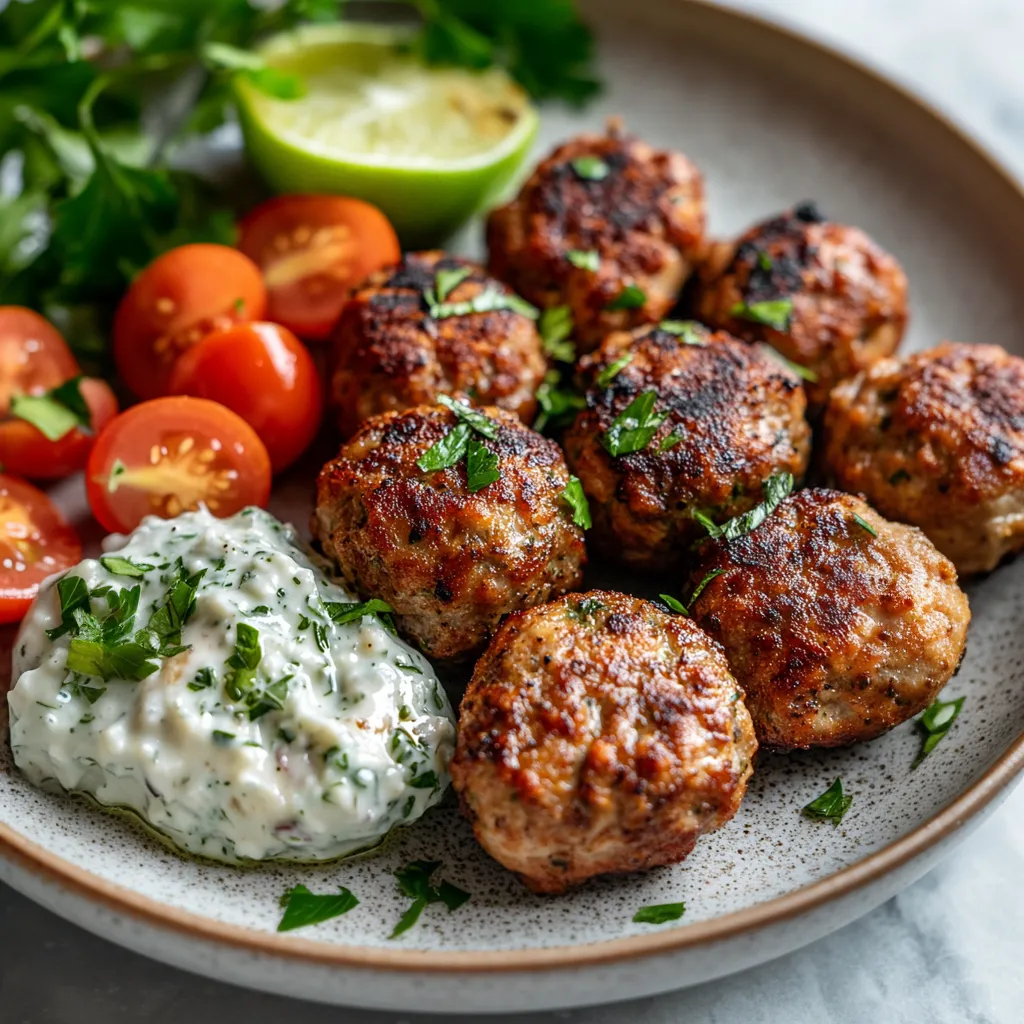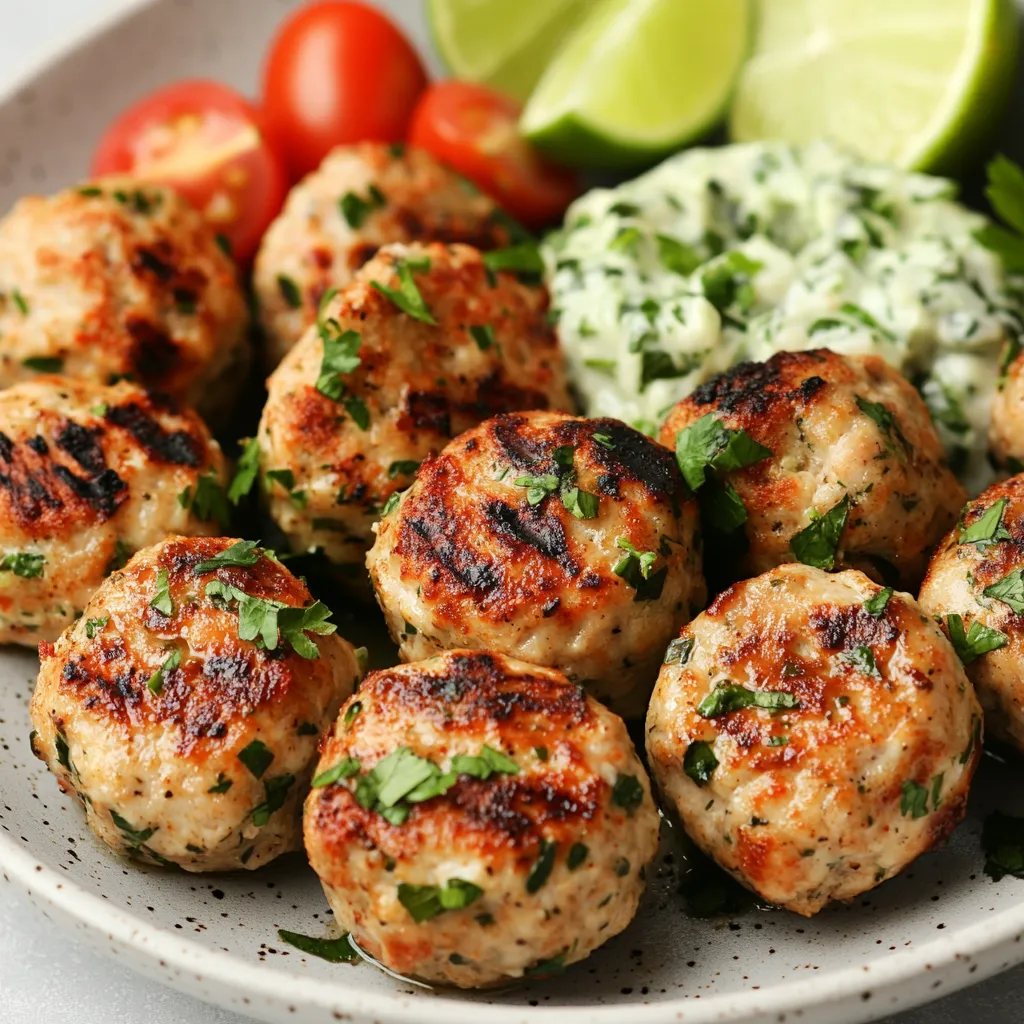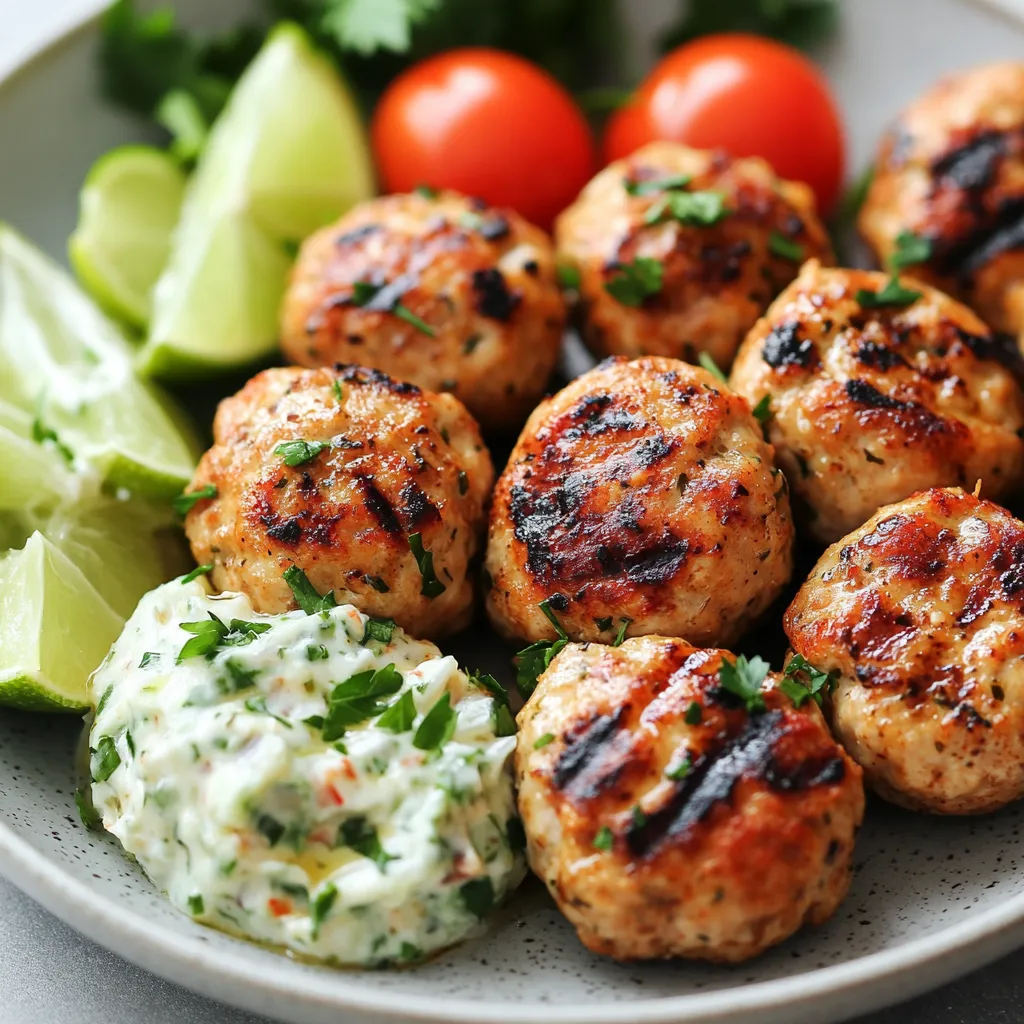 Save
Save
This hearty Greek Turkey Meatball recipe transforms simple ingredients into a Mediterranean feast that's both healthy and satisfying. The combination of aromatic herbs and spices in the meatballs pairs perfectly with the cool, creamy tzatziki sauce for a meal that feels both comforting and refreshing.
I first created these meatballs when trying to introduce more Mediterranean flavors into our family meals. What started as an experiment quickly became a weekly request from my husband and kids who now ask for "those Greek balls with the yogurt sauce" at least twice a month.
Ingredients
- Ground turkey provides lean protein without sacrificing moisture when properly prepared
- Breadcrumbs help bind the meatballs while keeping them tender
- Fresh parsley brightens the flavor profile and adds beautiful color
- Dried oregano delivers authentic Greek flavor that holds up well during cooking
- Ground cumin adds warmth and depth that complements the other Mediterranean spices
- Greek yogurt creates a thick creamy base for the tzatziki with protein bonus
- Fresh cucumber provides cool crunch and subtle freshness to balance the tzatziki
- Fresh dill gives the tzatziki its distinctive herbal note
Step-by-Step Instructions
- Mix the Meatball Ingredients
- Combine all meatball ingredients in a large bowl using clean hands or a fork. Work the mixture just until combined avoiding overmixing which can make your meatballs tough and dense. The texture should be cohesive but still light.
- Shape the Meatballs
- Scoop approximately two tablespoons of mixture and gently roll between your palms to form balls about 1.5 inches in diameter. If the mixture sticks to your hands slightly wet them with water or olive oil. Place formed meatballs on a plate or baking sheet.
- Cook to Perfection
- Choose your preferred cooking method oven baking creates even browning all around while using fewer dishes pan frying develops a beautiful crust but requires more attention air frying offers quick results with minimal oil. Whichever method you choose ensure the internal temperature reaches 165°F for food safety.
- Prepare the Tzatziki
- The key to great tzatziki is removing excess moisture from the cucumber. After grating squeeze it firmly in a clean kitchen towel or using paper towels. This prevents your sauce from becoming watery. Combine with yogurt and remaining ingredients stirring gently to incorporate.
- Rest and Serve
- Allow the meatballs to rest for 3 to 5 minutes after cooking which helps them retain their juices. Serve with a generous portion of tzatziki either alongside or drizzled over the top.

The secret ingredient that makes these meatballs special is actually the combination of onion and garlic. I always take extra time to finely mince these aromatics so they distribute evenly throughout the meat mixture. My grandmother taught me this technique and insisted that proper distribution of aromatics is what separates good meatballs from great ones.
Make Ahead Options
These meatballs are perfect for meal prep. You can prepare the mixture and shape the meatballs up to 24 hours in advance and store them covered in the refrigerator. The tzatziki actually improves with time as the flavors meld making it ideal to prepare a day ahead. For longer storage cooked meatballs can be refrigerated for up to 4 days or frozen for up to 3 months.
Serving Suggestions
While delicious on their own these meatballs truly shine when incorporated into a larger Mediterranean spread. Try serving them with warm pita bread cucumber tomato salad and roasted red peppers for a complete meal. For a lighter option wrap them in lettuce leaves with a dollop of tzatziki. They also work beautifully atop a Greek salad with feta cheese and kalamata olives for a protein packed lunch.
Ingredient Substitutions
If turkey isn't available ground chicken makes an excellent substitute with similar cooking times and texture. For a vegetarian version try using a mixture of cooked lentils and mushrooms processing them together to create a similar consistency. The breadcrumbs can be replaced with cooked quinoa for added protein or almond flour for a grain free option. No fresh dill for the tzatziki? Mint makes a refreshing alternative that still complements the Mediterranean flavor profile.

Recipe FAQs
- → Can I make these turkey meatballs ahead of time?
Yes! You can prepare the meatball mixture up to 24 hours in advance and store it covered in the refrigerator. You can also fully cook the meatballs, cool them completely, and refrigerate for up to 3 days or freeze for up to 3 months. The tzatziki sauce can be made 1-2 days ahead and stored in an airtight container in the refrigerator.
- → What's the best way to ensure my turkey meatballs don't dry out?
To keep turkey meatballs moist, avoid overmixing the meat mixture, which can make them tough. Don't overcook them - turkey is done at 165°F (74°C) internal temperature. The addition of onions and breadcrumbs in this recipe also helps retain moisture. If baking, consider placing a small pan of water in the oven to create humidity.
- → Can I substitute the ground turkey with another protein?
Absolutely! Ground chicken works as a direct substitute. For a more traditional Greek approach, you could use a blend of ground lamb and beef. For a vegetarian version, try using a mixture of mashed chickpeas, breadcrumbs, and feta cheese, though you'll need to adjust the cooking time and binding ingredients.
- → How do I properly drain the cucumber for tzatziki?
After grating the cucumber, place it in a clean kitchen towel, paper towels, or a fine-mesh sieve. Sprinkle with a small pinch of salt (which helps draw out moisture), then squeeze or press firmly to remove as much liquid as possible. This prevents your tzatziki from becoming watery and helps it maintain a creamy consistency.
- → What are some good side dishes to serve with these meatballs?
These Greek turkey meatballs pair wonderfully with warm pita bread, Greek lemon rice, or orzo pasta. For lighter options, serve alongside a traditional Greek salad, roasted Mediterranean vegetables, or a simple cucumber tomato salad. For a complete mezze platter, add hummus, olives, and feta cheese.
- → Is this dish gluten-free?
The recipe can easily be made gluten-free by substituting regular breadcrumbs with gluten-free breadcrumbs or almond flour. Always check that your other ingredients, particularly any pre-packaged spices or yogurt, are certified gluten-free if serving to someone with celiac disease or gluten sensitivity.
